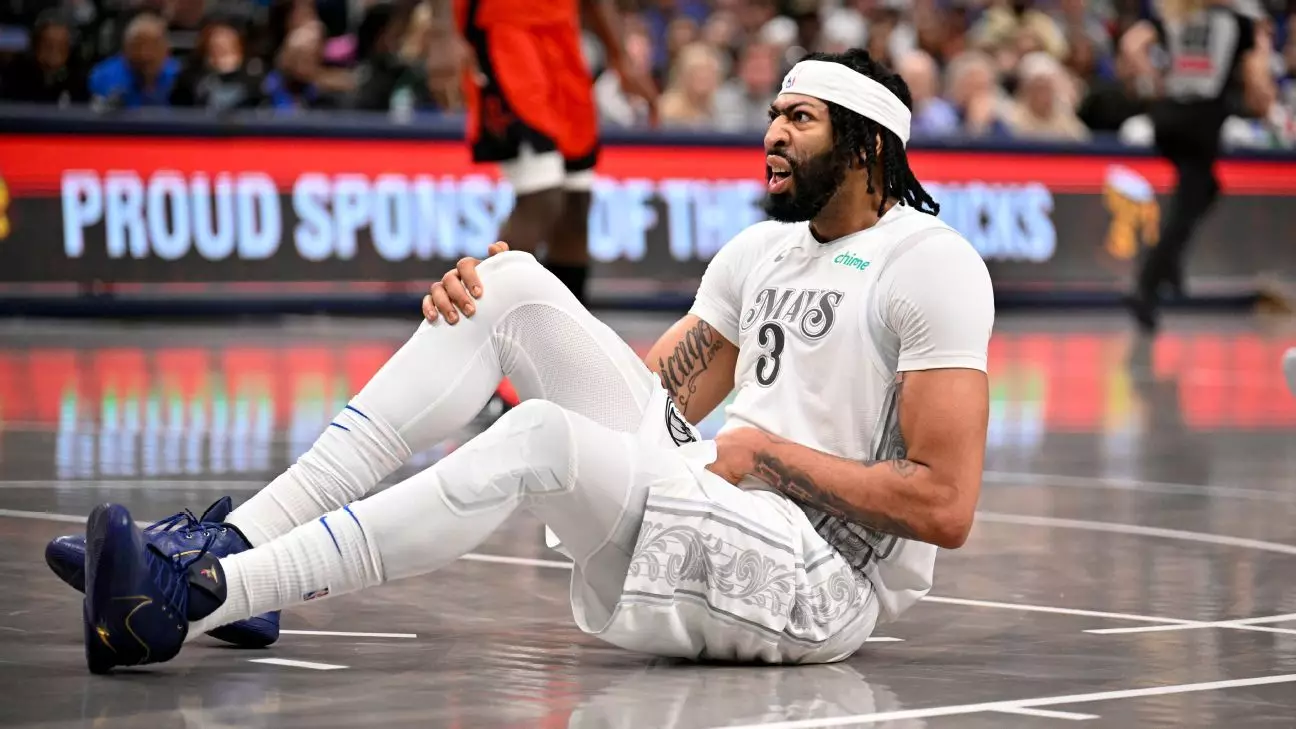The anticipation was palpable in Dallas as Anthony Davis made his much-hyped debut for the Mavericks. After a high-profile trade that sent Luka Doncic to the Los Angeles Lakers, fans and analysts alike were eager to see how the storied forward would mesh with his new team. However, the excitement was abruptly overshadowed by the unfortunate news of a lower-body injury that cut his game short. Despite this setback, the Mavericks managed to secure a 116-105 victory over the Houston Rockets, displaying resilience in the face of adversity.
Davis’s injury arose with just 1:37 left in the third quarter, sidelining him after an impressive performance where he recorded 26 points, 16 rebounds, 7 assists, and 3 blocks in just 31 minutes. The frustration of an early exit became more evident as fans had just begun to witness the chemistry and impact he could bring to the Mavericks. Injuries have long been a shadow over Davis’s career, a notable concern that has defined not only individual seasons but the trajectory of numerous teams he has played for. This latest ailment recalls previous struggles for Davis, raising questions about his long-term durability and availability for Dallas moving forward.
Davis’s arrival was met with a mixed bag of emotions among Mavericks fans. While many were excited about the potential of the new partnership, the trade sending Doncic away ignited significant backlash. Just outside the American Airlines Center prior to the game, approximately 1,000 supporters gathered in protest, brandishing signs and chanting in disapproval of general manager Nico Harrison’s controversial decision. Such public outcry underscored the emotional investment that fans have in their franchise players, particularly a standout like Doncic, who had catapulted the team into the limelight.
Harrison’s absence from his usual spot in the arena served as a stark reminder of the tensions brewing beneath the surface. As death threats circulated following the trade, the stakes became dangerously personal. This atmosphere only intensified the drama of the game, which had suddenly become more about front-office decisions and less about the excitement unfolding on the court.
Before his departure, Davis had captivated the audience, showcasing his abilities from the onset. The highlight of his initial play came early in the first quarter, where he executed a lob pass to center Daniel Gafford, setting the tone for what could become a thrilling partnership. The crowd erupted as Davis displayed his prowess with both finesse and power, indulging the Dallas faithful with hopes of what might have been—a glimpse of greatness that only seemed to make the sudden injury sting sharper.
As he waved his arms to engage the crowd during a timeout, it was clear that Davis had already begun to forge a connection with Dallas fans. His post-game comments, where he downplayed the severity of his injury, further exemplified a player who understood the tendencies of his body. Lamenting the tightness in his leg—a spasm that he believed would not sideline him for long—Davis projected an aura of optimism that may have been a crucial rallying point for the Dallas franchise.
As the Mavericks move forward, the looming question is not only about Davis’s immediate recovery but also about how his presence—or absence—will shape the team’s dynamics in the 2023-24 NBA season. With pre-existing durability concerns, the franchise must now navigate a delicate balance between maximizing Davis’s impact while ensuring his long-term health. The excitement surrounding his debut is juxtaposed against the precariousness of injury, illustrating a fundamental reality of professional sports.
Although Davis’s debut brought both hope and despair, it ultimately encapsulates the unpredictable nature of the game. Mavericks fans will be left ardently wishing for a swift recovery, as they hold on to the promise that, once fully fit, Davis can lead this team into a new era of success, transcending the turmoil of recent changes.

